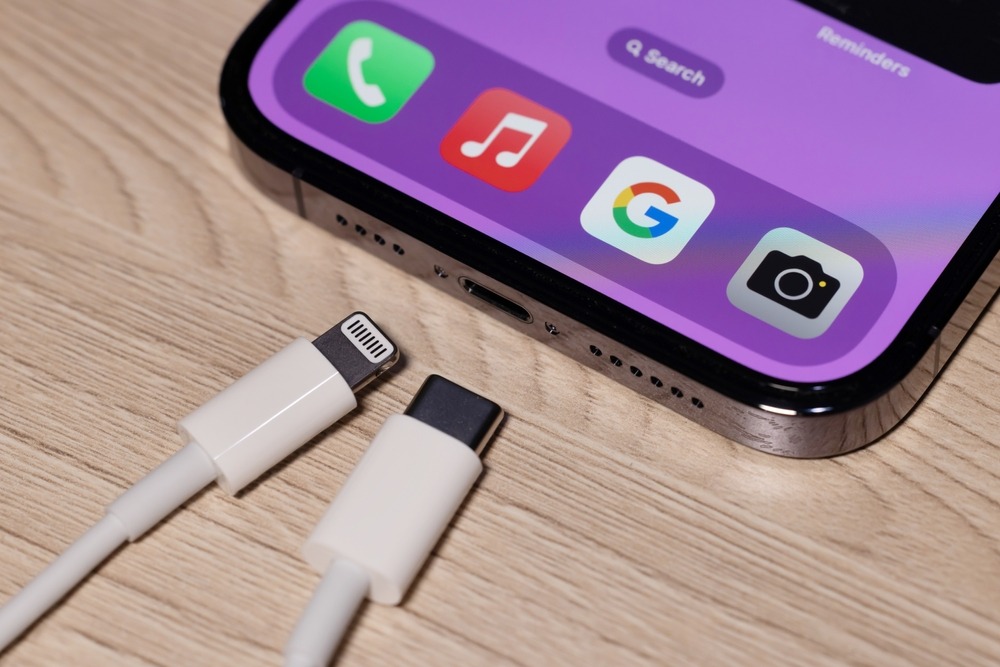
For the first time, the iPhone 15 series will replace Apple’s exclusive Lightning charger with USB-C charging
The Apple iPhone 15 series will introduce a subtle yet crucial hardware modification. After over a decade, the phones will feature USB-C instead of Lightning ports for charging. While it might appear minor, this shift is noteworthy as Apple embraces the universal charging standard.
For years, Apple has preferred its exclusive charging connector called Lightning for iPhones. Introduced in 2012, Lightning connectors succeeded Apple’s previous 30-pin connectors and share similar functions with USB-C, offering faster charging and a reversible design. Nevertheless, there are distinctions. Notably, the Lightning connector serves exclusively for charging iPhones and older iPads due to its proprietary nature, making it incompatible with Android smartphones or tablets.
What is USB-C?
The USB-C connector, also referred to as Type-C, is easily identifiable due to its oval shape and complete symmetry. Despite the USB connector’s age of over 20 years, Type-C represents a significant overhaul as the first reversible cable within the standard. A USB-C connector features a total of 24 pins, divided evenly with 12 on each side. These connectors serve multiple purposes, including data transfer, power delivery, and even video and audio transmission. The majority of Android smartphones employ USB-C cables, except for Apple iPhones. However, Apple’s other products, such as the latest iPads and MacBooks, have already adopted USB-C.
What’s the explanation for Apple’s change of direction, transitioning to USB-C charging?
Apple’s decision to abandon the Lightning connector in favor of the USB standard for its upcoming iPhones is not voluntary. Instead, Cupertino is compelled to adhere to a European Union regulation that mandates all new mobile phones to adopt a common USB-C charging port. These fresh EU regulations stipulate that by 2024, all smartphones, tablets, digital cameras, speakers, and other small devices must be compatible with USB-C. This groundbreaking law aims to simplify the array of chargers and cables that consumers need to purchase.
Apple has been particularly impacted by these EU regulations, as other prominent companies like Samsung and Xiaomi already offer smartphones equipped with the Type-C port.
Apple expressed its opposition to the legislation, contending that requiring all manufacturers to adopt USB-C would impede its capacity for innovation. In a letter dated 2021, Apple conveyed its concerns, stating that regulating a single type of connector for all devices in the market would hinder European consumers by delaying the introduction of advantageous advancements in charging standards, including those pertaining to safety and energy efficiency.
Greg Joswiak, Apple’s Senior Vice President of Worldwide Marketing, acknowledged last year during a technology conference in October that the company had “no choice” but to adhere to local laws, just as it does worldwide.

How will this impact the typical iPhone user?
The shift to USB-C on the iPhone brings a major advantage: a unified charger for all your Apple gadgets. This transition will prove advantageous for travelers and business individuals who carry multiple chargers. Furthermore, embracing USB-C will simplify the process of using third-party accessories with iPhones. Nonetheless, there’s a drawback to consider. Despite USB-C being a prevalent charging standard, it can be somewhat perplexing.
Arguably, the primary issue with USB-C is the existence of numerous standards and protocols for powering USB devices. Surprisingly, having a device with USB Type-C doesn’t guarantee access to the fastest data speeds available. In contrast, Lightning is less intricate, and given that it’s Apple’s proprietary technology, it functions as promised. Apple is likely to provide warnings to users if a USB-C cable is compatible with the iPhone, but this could necessitate additional effort. Nonetheless, it might be a source of frustration for users, despite the advantages and conveniences that USB-C offers over the Lightning port.



